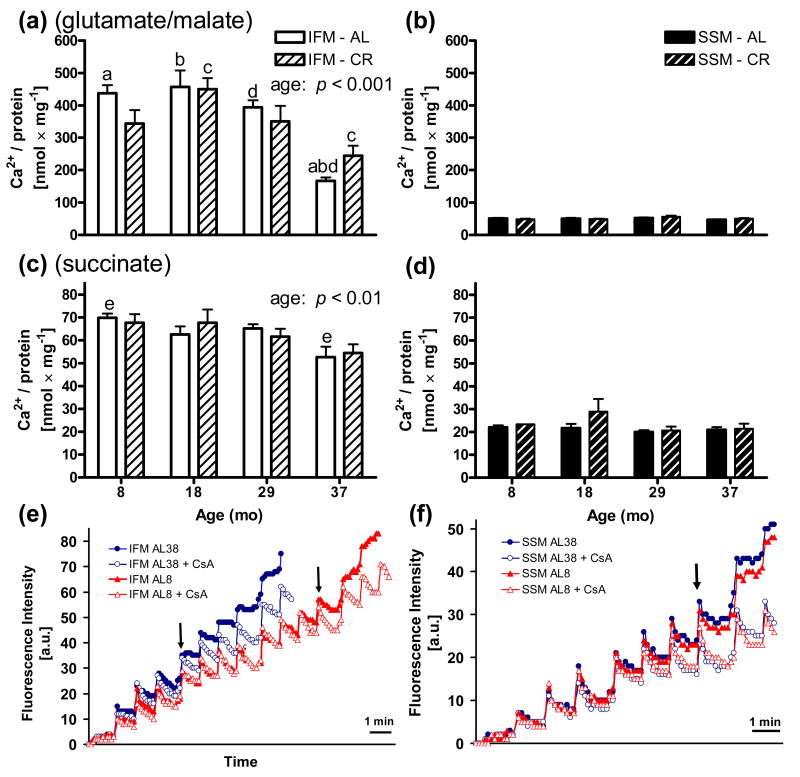Fig. 1.
Ca2+ retention capacities in heart ventricular mitochondria. Pulsed Ca2+ mitochondrial uptake monitored until mPTP opening using glutamate/malate (top figures) or succinate (middle figures) as respiratory substrates. Bars show how much Ca2+ can be added in pulses before mPTP opening. A significant decline in Ca2+ retention capacity was observed with age particularly during senescence for IFM (left side) on either glutamate/malate (p < 0.001) (a) or succinate (p < 0.01) (c) with two-way ANOVA. SSM (right side) displayed no age-effect for either substrate (b, d) and had significantly (p < 0.001-0.05 with two-way repeated measures ANOVA) lower Ca2+ retention capacities than IFM for all groups (not indicated). Use of the greater ROS producer succinate increased the vulnerability towards mPTP opening compared to glutamate/malate for both sub-populations. SSM were maintained at 0.75 mg/ml and IFM at either 0.1 mg/ml (glutamate/malate) or 0.4 mg/ml (succinate). Co-incubation with the PTP-inhibitor CsA prevented mPTP opening. Complementary analyses by one-way ANOVA with Tukey's post-hoc test gave significant differences between bars sharing the same letter (a,bp < 0.001, c,dp < 0.01, ep < 0.05) within each sub-set of mitochondria. No statistical differences were found between AL and CR groups of the same age. Data are shown as mean ±SEM nmol Ca2+ uptake per mg mitochondrial protein until mPTP opening, triggering a burst of Ca2+ release. Bottom figures show examples of extra-mitochondrial Ca2+ monitoring using the fluorescent probe Calcium Green-5N in (e) IFM (0.1 mg/ml) and (f) SSM (0.75 mg/ml) from 8 and 37 mo old AL fed rats using glutamate/malate as substrates. 1.25 nmol Ca2+ was added every minute. Arrows (↓) indicate when Ca2+ uptake begins to become difficult. The mPTP inhibitor cyclosporin A (CsA) prevented Ca2+-induced burst. Abbreviation: a.u. = arbitrary units.

